by Mike Gulett –
This text of this fascinating article was originally published in the Spring 2001 issue of The Griffon (The magazine of the Iso & Bizzarrini Owner’s Club). The author, C. Rino Argento, was instrumental in organizing the race activities for Giotto Bizzarrini at the 12 Hours of Sebring in 1965.
This was a terrible week for everyone involved with the Iso Grifo/Bizzarrini team as you will read below. The mystery of what happened to the Grifo/Bizzarrini race cars (chassis No. BO 210 and BO 214) is still with us.
by C. Rino Argento
During my dealings with Mr. Renzo Rivolta and during our conversations both here and in Italy the subject of Mr. Giotto Bizzarrini, his background, his past activities, and his efforts to produce and market both a production and a racing version of the Grifo came up, along with his request for help in both future sales activities and participation in competition in the United States which, in other words, meant the Sebring Twelve Hour Race as it was then the only internationally recognized race in the U.S.
I did not know, and I did not care to know, what the arrangements were between Mr. Rivola and Mr. Bizzarrini regarding the supplying of engines, parts, frames,
suspensions, etc. but it was clear to me that the old technique of “Winning on Sunday and Selling on Monday” would have benefited both companies.
In 1964 the Grifos had held their own and performed quite well in the face of fierce competition at Le Mans, Monza, Targa Florio, and Sebring and the 12 Hours of Sebring was a natural repeat target not only performance-wise but also from a sales standpoint. In other words, coming to a race in the U.S. was an excellent idea but also a sizable expense in transportation of the cars, mechanics, drivers, spare parts, lodging, etc. and Mr. Bizzarrini needed help, at least with the logistics.
We started talking at the end of 1964 then got going with the plans. Giotto was to come to Sebring with two cars, two drivers of his choice, and a mechanic. I provided a house trailer in the paddock area just like all the other teams in the race and two drivers: the choice was relatively easy. For years Charlie Rainville of Providence, Rhode Island had impressed me with his driving skills (he was mainly driving Alfas as I did at that time) and his ability to finish in long distance races. Furthermore, he was an excellent mechanic and had raced at Sebring for many years performing equally or better than the Alfa factory teams. (Incidentally, the following year Charlie would race for our Chrysler Corporation Team Starfish of which I was the manager, in the new “Trans Am” series).
My second choice was Mike Gammino, also of Rhode Island who, for the previous three years, had been racing a Ferrari GTO in SCCA races holding his own against Cobras and other heavy machinery. Mike had purchased the GTO from Bob Grossman in New York for about $12,000 believe it or not that was the going price in those days!
Needless to say, there was no money involved for them or anybody else whom I recruited to help in this effort. Boy, have things changed since then!
The team assembles
Speaking of help, my old friend Max Balchowsky, a super mechanic and the builder of the famous Buick based Old Yellers, was eager to participate and he was going to bring with him to Sebring a gentleman by the name of Mitch Michelmore. Mr. Michelmore had a Chevrolet dealership in Reseda, California and he had sold quite a few Iso Rivoltas; he was enthusiastic about the cars and interested in the racing version (the Grifos) and was seriously considering a sales activity for them in this country.
Messrs. Balchowsky, Michelmore, and his son were to come to Florida in their twin-engine plane. And there was more help at hand. Mike Gammino was to bring his Italian mechanic, Libero, Gunther Hering, another friend of mine, was more than enthusiastic to take part, Sandy Rainville was more than able to keep lap charts (something she had done for years), and Gammino’s father and uncle would also be present to help in any way that was necessary.
Finding a garage to prepare and store the cars was not a big problem; Sebring was not that big a town but it did have a goodly number of auto dealerships which were often willing to lend their garage areas to the competitors sometimes for free because the “foot traffic” of people coming to watch the cars and the preparations was worth it. Ferrari for years had used the local Pontiac dealership but this time they had a lot of cars entered and they went elsewhere so the Pontiac dealership became our home. Needless to say, the Chaparrals, Fords and other “big budget” entries had their own fully equipped trailers but we were not in that category.
In other words, I managed to assemble a team of professionals that had been “in it” for quite a number of years — and all at no cost to Mr. Bizzarrini!
The rest of the preparation was relatively easy: entering the two cars cost a total of $250.00 (remember this is 1965!). And assistance was obtained without too much effort from Goodyear, Quaker State, Castrol, Champion and other firms, which, at that time, was standard operating procedure.
As everybody knows, the Sebring track was an old, abandoned flight-training base for four engined bombers during World War II. A combination of very long straights, a couple of hairpins, four tight curves, and a bumpy surface made it a challenging course but with plenty of escape routes. God knows how the organizer, Alec Ullman, a man who had a knack for shaking the right hands, succeeded in getting this race onto the International FIA Calendar but he did and his helper, Reggie Smith, blessed with a heavy English accent, did all the grunt work.
Sebring had been founded and developed by a gentleman who had already developed Sebring, Ohio. It was no surprise, therefore, that the center of town had a small park just like any old Ohio town, and that was a blessing for the many spectators who could not find lodging in town. Finding a place to sleep was quite a problem with only a couple of big hotels available and booked a year in advance. But there was a committee that provided just about everyone with addresses of families in or near town who were willing to rent you their guest room for very little money.
And getting a decent breakfast in the morning was not that easy. There were just a few diners and restaurants in this small town, which was used to the slow pace of an orange growing region. The influx of many thousands of people, some of them speaking very strange languages, was just too much! But somehow after waiting for an hour or more you got your bacon and eggs.
But Sebring was a pilgrimage! In the days when the only race on the TV was the Indy 500 and the newspapers ignored the sport this was the only chance to see the cars and the drivers you had seen only in Road & Track magazine. What Klementaski had photographed and John Bond and Henry Manney and a few others described were there: Hawthorne, Musso, Fangio, Graham Hill, Scarfiotti, and Stirling Moss and a lot of others were there and everybody also wanted to see how the local SCAA talent like Phil Hill, Hansgen, Richards, O’Brien, Buzzetta, Thompson, Patrick and a host of others would compare.
The competition
In those days there was only one international racing organization not the dozen or so sanctioning bodies and associations we have now. So, everybody wanted to see the race and it was the greatest round-up of MGs, Porsches, Alfas, Rolls Royces, Abarths, Allards, VWs, Triumphs, Healeys, etc. in the country. Yes, Daytona with its 24 Hour Race would come along in a couple of years but the oval and grandstands smelled too much of Indy or NASCAR. Sebring was a people’s race with your car or trailer parked close to the fence and a barbecue in the back and it was warm and it was a lot of fun — and it lasted for 12 hours!
For the people who lived in the Northern part of the country getting away from the cold, snow, wind, and slush of New York, Pittsburgh, Cleveland, or Chicago in the 3rd week of March and going South to the sun and smell of orange blossoms in Central Florida was about the best vacation one could have and the confirmation that – yes – Spring would arrive in the North too in a month or so.
Very few people flew down to Florida; in those days if you owned a sports car of any kind it was a matter of pride and pleasure to drive all the way down and drivers of those “funny little foreign cars” would wave at each other on the road. But in those pre-interstate highway system days you would also be the target of every sheriff of every sleepy little town in Georgia, Florida, or the Carolinas and it was impossible to avoid a speeding ticket.
It was the most blatant case of highway robbery in the country and the AAA’s warnings at the entrance to several towns did little to alleviate the problem. There were so many such stories and incidents that someone could and should write a book about them.
To the members of our club I do not think it necessary to describe the two cars, which in February 1965 were loaded onto a cargo ship of the Lykes Line shipping company. The bodies, by Piero Drogo, were aluminum, De Dion in the rear, independent suspension in front, Dunlop aluminum calipers and cast iron discs in front, the old reliable Chevy engine with high compression pistons, modified cams, and a beautiful cast aluminum intake manifold supporting four double Webers of 42mm, if I remember well.
In Livorno they had constructed a huge wooden box containing all the spare parts including transmissions, rear ends, engines, tool, etc. But upon arrival there was no forklift that could grab and lift it so at some additional expense a special crane truck had to be hired to lift it onto the truck for the trip from Jacksonville to Sebring.
Be that as it may by Tuesday, March 23rd we were all together at the Pontiac garage in Sebring with Balchowsky and the Michelmores coming via commercial airline from New Orleans where they had to leave their own twin engine plane because of adverse weather conditions, a little incident which would have tragic consequences later on.
Gammino and Rainville were to drive car No. 9 and Silvio Moser, a Swiss driver of some renown was to drive No. 8. The cars serial numbers were 210 and 214. Bizzarrini had also brought with him Mr. Nello Ugolini, formerly race manager for Maserati and a Mr. De La Graviere (and wife and/or girlfriend) a Frenchman who, as it turned out, had purchased one or both the cars. Casoni, then an up and coming driver from Italy, was teamed-up with Moser.
So here we are, finally, at Sebring with two good cars, a good crew, and four good drivers but the competition is also there — and how! Two Chaparrals with Jim Hall, Hap Sharp, Bruce Jennings, and Ronny Hissom, four Ferrari 275 LMs all driven by the best drivers around, there are Ford GT40s with Bruce McLaren and Ken Miles, there are Cobras, and Corvettes, and Porsche 904s, and a prototype from Germany and a bunch of Alfa Romeo TZs from Autodelta, one of them driven by Roberto Bussinello who happens to live two houses down the street from me in Verona, Italy.
Yes, that is a lot of competition, but we figured that if we could finish the race the cars had the power, the speed, and the support to finish in the first five places keeping in mind that some of the faster cars would, as usual at the 12 Hour Sebring Race, fall by the wayside.
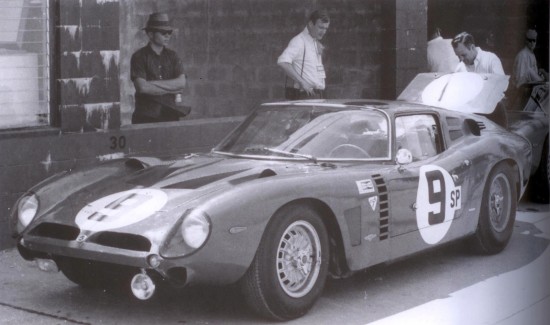

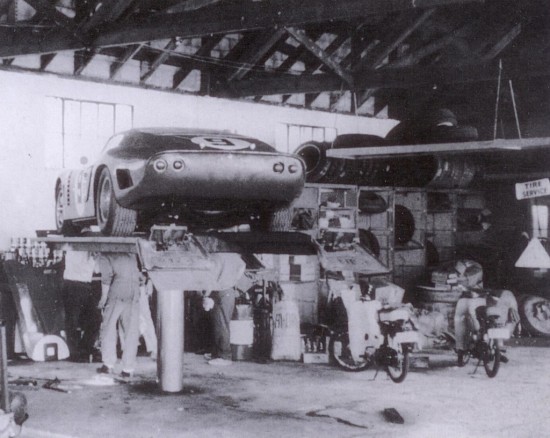
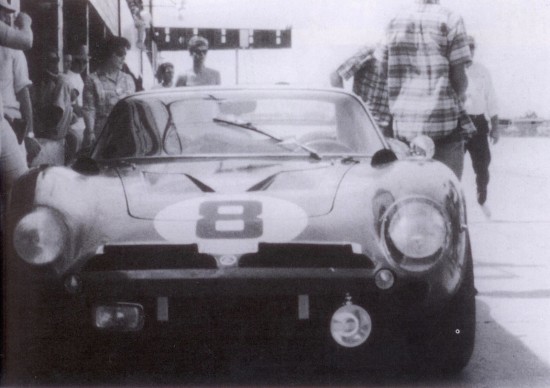
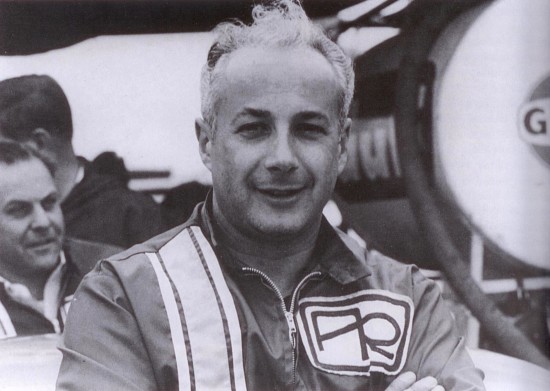
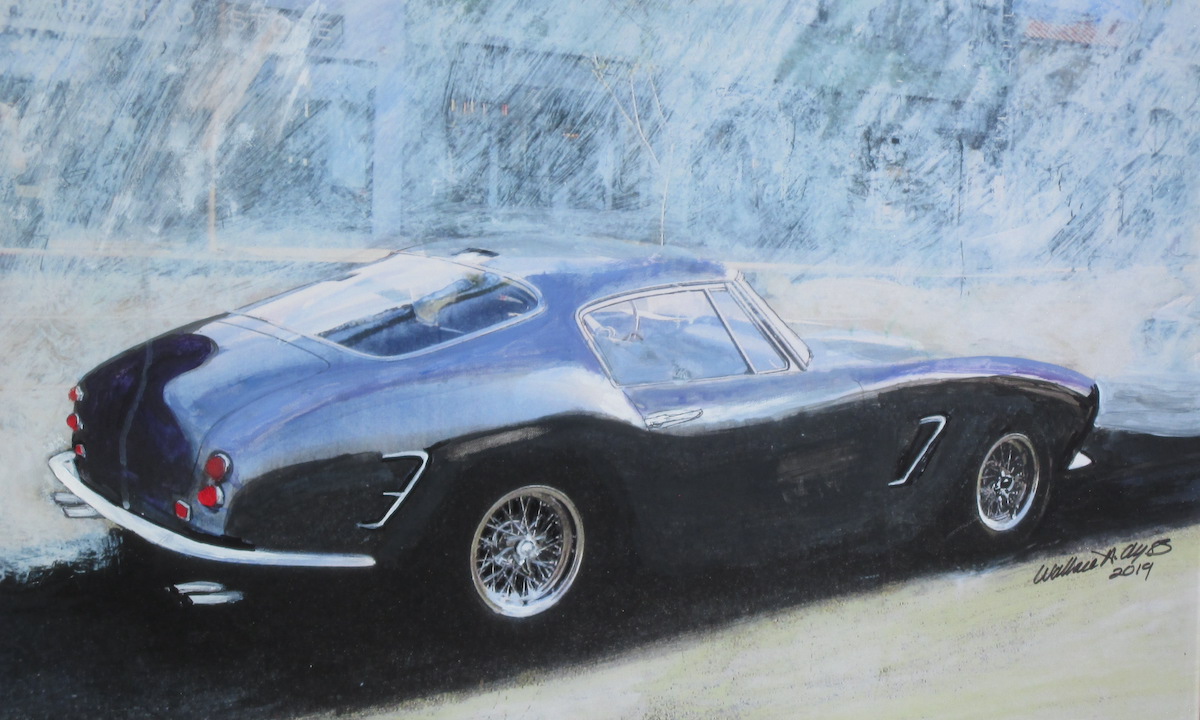

My friends and I were at the 1965 Sebring, coming over from Tampa. The picture was taken when car #9 was heading toward the snow fence. The accident happened so fast that before we realized it, the lady was trapped under the car. I believe we were naive to believe the fence was going to stop the car. I was in the white shirt helping to lift the car off of her. I never found out if the woman was seriously hurt but she was able to get out from under the car and sit up.
Bill,
Fascinating. Your photo must have been taken a few minutes before the attached photo which is in Part 1 of this very interesting story.
Are you in this photo somewhere? I do hope that lady was alright.
Thank you for sharing this with us.
Aloha, I am the grandson of Mitch Michelmore. My mother Shirley (John’s widow) and my younger brother Dave all live in Hawaii now.
Dornan ‘Mitch’ Michelmore and my father John owned Michelmore Motors Porsche / Volkswagon / Iso on Reseda blvd. He was never Chevy dealer that I know of. Maybe in the 40-50’s?
My father crashed an Iso Rivolta with my mom 6 months pregnant with my little brother in ’63. They both survived the crash as they were not wearing seatbelts or the car didn’t have any. Shirley was thrown out the windshield which ultimately saved her life as a Cadillac T-boned the passenger side of the Iso. Had she been wearing a seatbelt they (mom and baby) would have died that day.
We have never known the full story of what actually happened at Sebring before the plane crash.
We were never told anything about the racing at Sebring.
Thank you for the wonderful article. You’ve filled another void in the story of my dads life.
Years ago we saw an Iso Rivolta at Denny’s in Costa Mesa, Ca. The owner was in the booth next to us talking some crazy story about how he alone imported the Iso cars and such and such.
I couldn’t take the BS anymore so I stood up and introduced my family from Michelmore Motors Porsche Volkswagon and ISO to this gentleman. I applauded him for his fine story telling and BS much to the amaze of his fellow Lions club morning coffee club and then we excused ourselves.
We had a good laugh and commented on our impeccable timing.
Good day sir and thanks again.
Peter B. Michelmore
Michelmore Motors